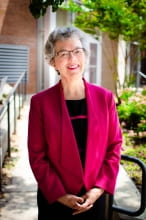This blog post was originally posted on the Horowitz Center for Health Literacy website on April 19, 2019
Written by Dr. Sandra Quinn, Senior Associate Director of Maryland Center for Health Equity
Health literacy and health equity have critical intersection points. On a general level, health literacy is an individual’s ability to find accurate and credible health information and services and act on them. When individuals are reluctant to seek information or ask questions, we see cracks in health literacy building blocks. When individuals are part of a population that is already disadvantaged, they tend to have even greater struggles with health literacy. That’s why health literacy and health equity are so inextricably linked. One doesn’t exist without the other. To obtain both, individuals must be able to access, understand, and use acquired knowledge and support to interact with practitioners to advocate for their health.
As a professor and chair of the Family Science department and senior associate director of the Maryland Center for Health Equity, I’ve learned a lot about health literacy while conducting research in the community. One aspect is the language we use. Being cognizant of my language with colleagues and in the community goes a long way in communicating effectively with different audiences. Being audience-centered promotes a key tenet of health literacy: clear communication. Part of clear communication is visual as well as spoken. Many of us are not trained to produce excellent visuals, but they help get a complicated message across.
Health literacy can be easily woven in the fields that I work in, most specifically family science. One research area I’ve participated in is the adult acceptance of vaccines. At a time in which misinformation is everywhere, clear communication is key when conducting research or field work. Luckily, we have our very own Center for Health Literacy that can offer the guidance and support to aid us in our work. Dr. Baur and Dr. Horowitz are able to help us modify certain research questions to make them more understandable.
Moving forward, we need to cultivate a culture of encouraging patients to ask questions and advocate for their health. To do this, facilities and centers need to proactively engage health literacy experts to go through their practices with a fine tooth comb. Are they truly understandable to a large array of audiences? Taking this first step in ensuring larger institutions are health literate will solidify the foundation for health equity for generations to come.
_____________________________
Dr. Quinn is Professor and Chair of the Department of Family Science, Director of the doctoral program in Maternal and Child Health, and Senior Associate Director of the Maryland Center for Health Equity, School of Public Health, University of Maryland. From 2011-2017, she was Principal Investigator (with S. Thomas) for the Center of Excellence in Race, Ethnicity and Health Disparities Research, and the PI on a study, Uncovering and Addressing Cultural Beliefs behind Vaccine Racial Disparities. She is currently PI (w. D. Broniatowski, George Washington University) on a NIGMS grant, Supplementing Survey-Based Analyses of Group Vaccination Narratives and Behaviors Using Social Media.

